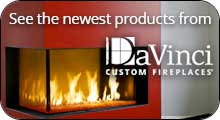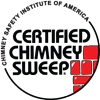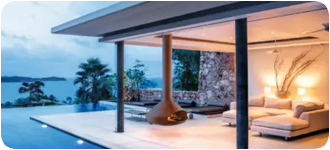When adding a fireplace and chimney to your home, it is important that your builder understand the functional intricacies of a fireplace and chimney system. Unfortunately, many contractors think that a firebox with a flue attached is all you need to achieve a functioning fireplace, but in reality, there are a lot of codes to adhere to and a lot of planning that goes into the construction of a chimney. The certified masonry experts at London Chimney Services & Fireplace Shoppe know just what you need out of your system, and will help design and construct it to fit your unique specifications.
Is Chimney Construction Really That Complicated?
Absolutely! In order for a fireplace and chimney to function properly, proper air flow has to be achieved so that the smoke and toxic gases produced during combustion will be vented up your chimney and out of your home, instead of back into your living room. If this delicate balance is not achieved, you could find yourself with a smoky living room – worse yet, your home could begin to fill up with dangerous carbon monoxide!
When constructing a chimney, there are several key components that must be built and installed correctly in order for your chimney to properly vent:
Firebox:
The firebox is the area where you will actually build your fire. This needs to be the correct size for the fireplace opening and the attached flue. If your firebox is too large or too small for the hearth opening or the flue, you’ll have all sorts of issues from inefficiency to improper draft and smoke wafting.
Smoke Chamber:
The smoke chamber is the area that sits directly above the firebox and is one of the hardest areas to access. This is directly responsible for the airflow in your chimney. The smoke chamber should be parged smooth and designed to specific dimensions to achieve the airflow necessary to safely build and burn a fire.
Flue:
The flue is the path inside of your chimney structure responsible for channeling the smoke and gases up and out of the home. The flue should be lined with a proper chimney liner to help prevent damage to the masonry structure of your chimney and to keep heat and gases contained.
Masonry:
The part of your chimney flue that extends above your roof line is generally protected by a masonry structure, which gives your chimney the traditional look that most people associate with them. This structure must be properly protected against water by the use of masonry-specific sealants and a properly constructed and installed chimney crown, flashing, and cap.
Call Us Today!
If you are looking to add a chimney and fireplace to your home, give London Chimney a call. We know what it takes to build a chimney that lasts! Have questions? Stop by our showroom to talk to one of our knowledgeable professionals!
We perform many masonry repair services on projects large and small. You can count on our masonry services for the best results every time.









































